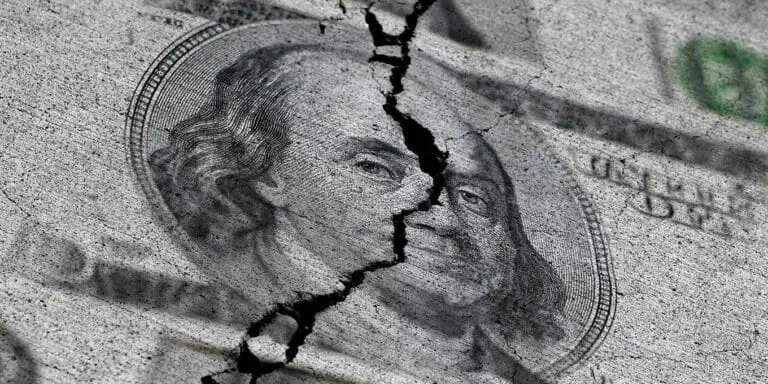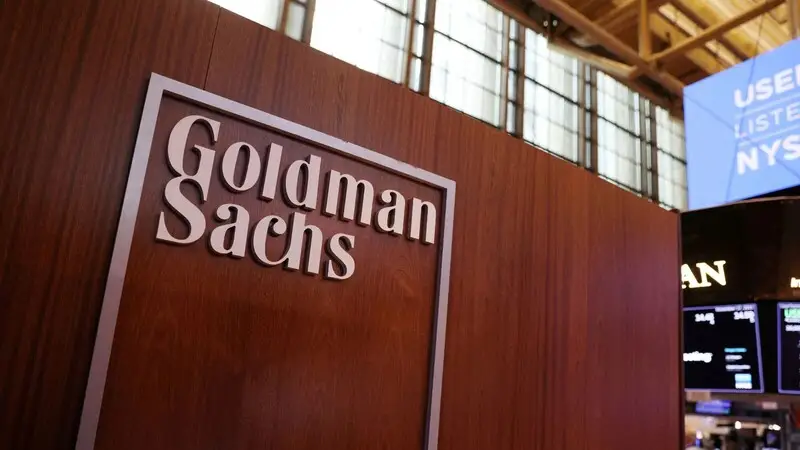Goldman Sachs’ predictions about the U.S. dollar fall are pointing to a continuing downward trajectory as the greenback tumbles in global markets. The dollar has already plummeted over 8% this year against major currencies, with April alone seeing a 4.5% drop – the steepest monthly decline since late 2022.
This dramatic fall has, at the time of writing, sparked serious concerns about a potential dollar crisis in 2025 and also raised questions about whether foreign investors will continue abandoning U.S. assets amid the ongoing U.S. economic slowdown.
Goldman Sachs chief economist Jan Hatzius stated:
“With all due humility, I believe that the recent dollar depreciation of 5% on a broad trade-weighted basis has considerably further to go.”
Also Read: Treasury Secretary Bessent Says “India Might Be One of First Trade Deals We’ll Sign”
Why U.S. Dollar Forecast 2025 Warns Of Crisis And Foreign Sell-Off

The U.S. dollar’s declining trend according to Goldman Sachs analysts occurs during a period where investors rapidly sell U.S. assets which has led some experts to label this as a confidence crisis in the world’s main reserve currency. The present economic environment displays characteristics that have appeared before major currency devaluations occurred. The U.S. dollar forecast for 2025 shows growing negative potential because of ongoing tariff uncertainty and recession fears, which drive market weakness.
Historical Precedents Signal Deeper Decline
The dollar experienced significant devaluations of 25-30% during two similar historical periods which occurred in the mid-1980s and early 2000s. The current dollar crisis for 2025 shows signs of intensifying because foreign investors may step up their sales of U.S. assets and withdraw from American markets.
Jan Hatzius noted in his analysis:
“I often dodge questions about the dollar. A large body of academic literature and my own experience as an economic forecaster have taught me that predicting exchange rates is even harder than predicting growth, inflation, and interest rates.”
Also Read: Kazakhstan Breaks OPEC Unity—Commerzbank Warns of De-Dollarization!
Foreign Capital Exodus Threatens Stability
The warning from Goldman Sachs reveals that non-U.S. investors maintain $22 trillion worth of U.S. assets, which amounts to one-third of their total investments. Equities make up approximately fifty percent of these holdings, yet they lack currency protection which exposes them to significant market risks. The $1.1 trillion current account deficit of America demands yearly foreign capital inflows to maintain stability,y which could prove catastrophic for the dollar’s value if foreign investors pause their asset sales.
Economic Growth Projections Worsen Outlook
The U.S. economic slowdown is further compounding the dollar crisis possibilities for 2025. Recent IMF projections show U.S. growth dropping to just 1.8% in 2025 from 2.8% last year – a full percentage point decline that really undermines a key pillar of dollar strength in global markets.
Jan Hatzius explained in his assessment:
“Such factors would not carry so much weight if the U.S. economy continued to outperform its peers, but this looks unlikely.”
Mixed Economic Consequences
Goldman Sachs predicts that a U.S. dollar depreciation will trigger both inflationary pressure from new tariffs alongside export variety enhancements that could reduce the trade deficit. The extent of potential benefits remains unclear because the cause of currency weakness determines everything. A weakening currency might fail to counter tighter financial conditions throughout this U.S. economic downturn when foreign investor asset sales are a primary cause of dollar value decline.
Also Read: Ripple: AI Predicts XRP Price For May 1st, 2025
Reserve Status Remains Despite Challenges
The projected decline in the U.S. dollar value for 2025 does not indicate that its position as reserve currency is at risk.
Hatzius stated in his analysis that their assessment indicates that the dollar possesses fundamental advantages as a global exchange currency and value storage tool which make it nearly impossible for other currencies to displace.
Recent research conducted by Deutsche Bank analysts suggests that the euro will likely increase to $1.30 throughout the next decade while the dollar remains weak at its current value of $1.13.






